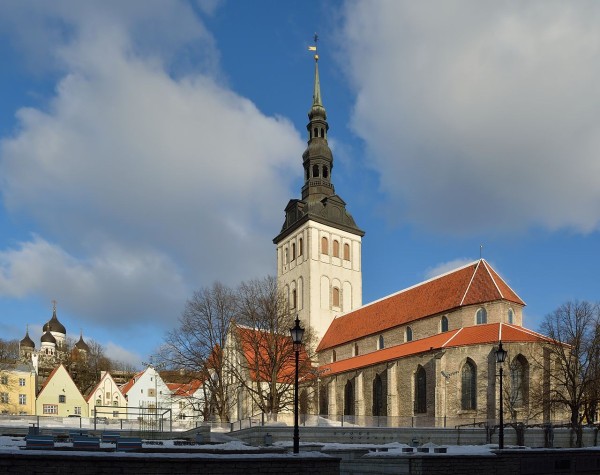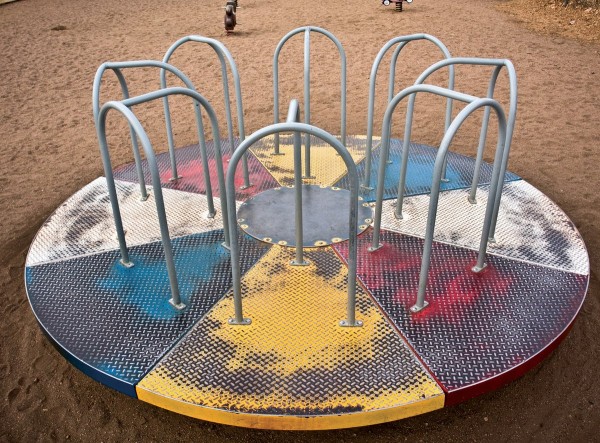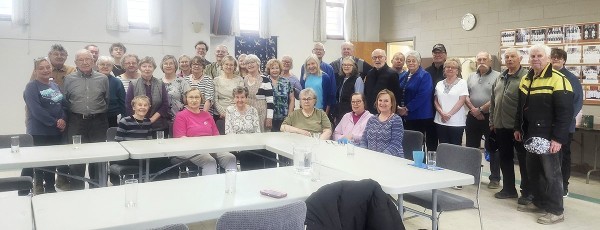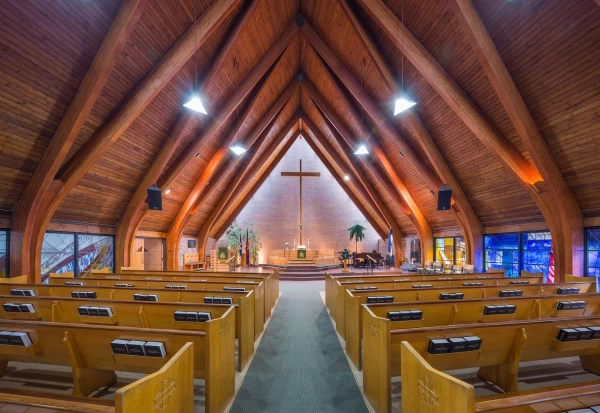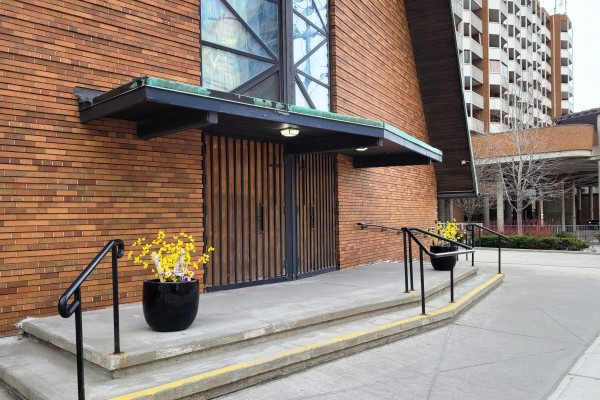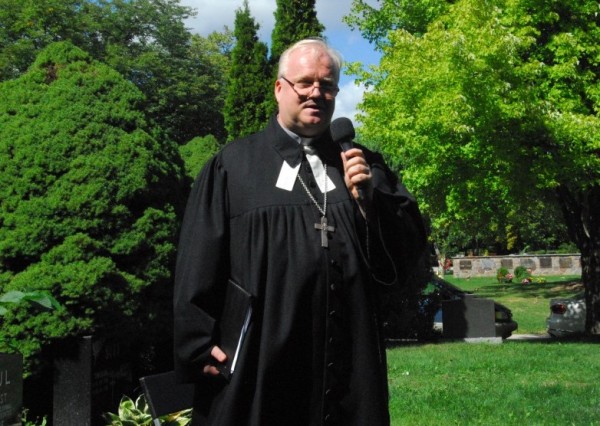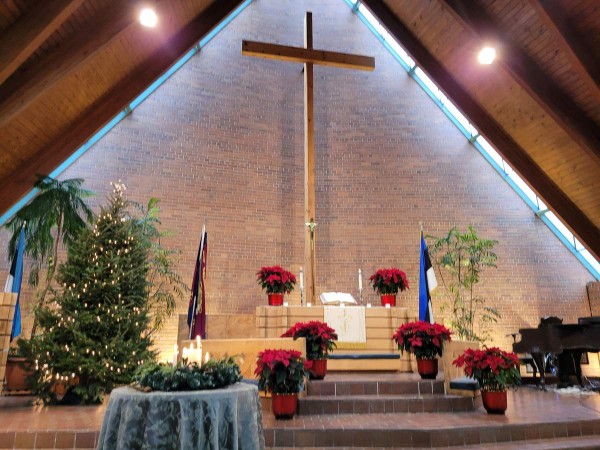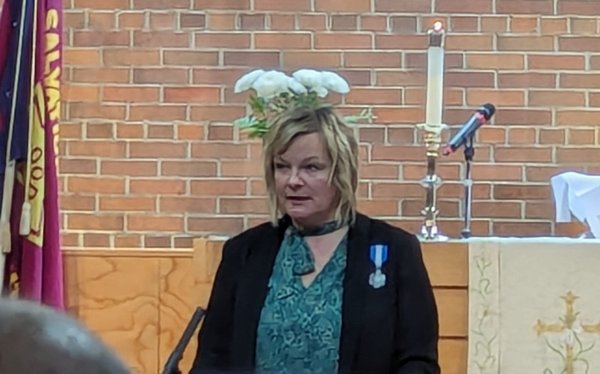The undersigned recently received from a good friend printouts of an investigative reporting series that appeared last summer online at the Delfi portal, Estonia’s daily “Eesti Päevaleht”, concurrently also in “Levila”. The series addressed how EELK, the Estonian Evangelical Lutheran Church in Estonia is the most powerful lobby group in the country, delving into certain unscrupulous transactions spearheaded by the Archbishop. Urmas Viilma has the ear and confidence of many powerful and influential politicians, including the previous Prime Minister Jüri Ratas. Ratas’ name, incidentally, was bandied about as a potential presidential candidate.
(It must be emphasized that E.E.L.K, our church abroad, adheres to the Estonian Lutheran Evangelical Church’s original constitution accepted in Tallinn on 11.09.1919 at the second Church Congress. And adhered to in exile, establishing their own congregations according to that document. As opposed to the EELK, founded on April 28, 1949, during Soviet occupation (forcing the exile/refugee church to add the determining punctuation between the letters so as to make clear the distinction between Soviet Estonia’s, and whose top leaders received their ordinations during the Communist-thought-and-rule-determined era. It has become a crypto-church. Crypto is Greek for something that is hidden, secret. Often applied to hidden allegiances to a political creed. There is no openness. See Matthew 5:14 - "Ye are the light of the world. A city that is set on a hill cannot be hid". A strong statement against a crypto-church. TN note.)
Those interested in the original can find these articles online, at Delfi, Eesti Päevaleht and Levila with little effort, to find out how, in Estonia, the power of religion is political and financial rather than a motivation to attract and keep believers, the faithful (TN). The series is titled Usu võim, appearing at the end of August.
While it would be interesting to delve into the various topics addressed (Crypto-Catholicism, how EELK acquired power and money as well as their influence in politics, much, much more) the intent here is to describe, according to Estonia's investigative journalists how a church was sold. And not just any church. Niguliste (St. Nicholas) in Tallinn, perhaps the most known of all in the country. During the Soviet occupation it was turned into a museum. The communist aversion to religion was and is well documented. Niguliste features a fragment of one of the most significant and valuable religious artworks in Europe, Bernt Notke’s Surmatants, Danse Macabre. The emphasis on this incredible work, confirmed certainly by all who have had the privilege of viewing it is on the transience of life, somehow appropriate in modern times.
Niguliste is not the oldest church in Estonia, that honour goes to Pöide church. Nor even in Tallinn - Toomkirik (Dome Church, or the Cathedral of St. Mary) holds that distinction. And not the tallest – Oleviste, built before Niguliste, was for a time the tallest building in the world.
Yet it is perhaps the best known among Estonians. First it was an observation tower built in 1230 at the foot of Toompea. When the city was walled it became a church in 1435, named after St. Nicholas, the patron saint of seafarers and fishermen. With the conversion to Lutheranism throughout the country in the 16th century and with the acquisition of many important artworks Niguliste established itself as both a cultural and religious Mecca for many. The church has suffered over the years. Bombed into ruins by the Soviets during the infamous horrible March bombings (March 9th, 1944) of WW II it was restored, then a disastrous fire followed in 1982. Once again, it was restored. It still holds religious relics that are irreplaceable; hence the museum. During Soviet occupation it also became a concert hall.
Thus it boggles the mind that under Archbishop Andres Põder’s leadership EELK was primed to demolish the building and erect tall condominium buildings, ignoring the fact that glass towers in the Old Town would stick out like a sore thumb. All about the money, again. Let us remember Matthew 20:13, where it is described how Jesus entered a temple and overturned the tables of the money-changers, condemning them for having turned God's house of prayer into a "den of thieves".
The focus on the sale of Niguliste to the Estonian state is part of the lengthy section of the investigation, appearing online August 22, 2021. It is titled “How the Archbishop Built the Church into Estonia’s Most Powerful Lobby Network”. No author is given, although for some other parts of the series the contributors are named. Fear, perhaps, led to remaining in anonymity, hiding behind the aegis of the publication? Look for the sub-heading Kirik ja raha, (The Church and money).
In a nutshell, negotiations were instigated in 2013 by Põder, who reached an agreement with the Minister of Culture, Rein Lang, that Niguliste would be returned to the EELK fold but the museum would remain. As noted, Põder was unscrupulous, Viilma is just a follower. When Viilma succeeded Põder he advised the government that EELK was not interested in the historic church but desired money instead. This because the Communist occupiers had claimed the building as theirs, somehow the ownership was grandfathered into being the property of the Estonian government, even with independence regained. The church should actually have been repatriated to E.E.L.K. as it was the ruling religious body prior to occupation. Just as farms, houses were finally returned to the lawful owners, from whom the Soviets had usurped them.
Lengthy and difficult negotiations commenced. According to Jüri Ehasalu, an entrepreneur long associated with EELK the demand for a total of 111 million euros, taking into account the historic altar, Surmatants and land value, was not merely greed. Ehasalu was befuddled by the outrageous demand, unable to explain it. The government countered with an offer of 384,716 euros plus 100,000 euros for land value. Which sum was less than the price of an apartment in Tallinn’s old town.
And then PM Jüri Ratas became involved. By this time Archbishop Viilma had lowered his demands, according to the journalists EELK would have been content with 3.6 million Euros. But when the deal was concluded the final sum was almost twice that – 6,753,000 euros. In the final stage it was an agreement between Ratas and Viilma that sealed the deal. Not by the high-priced lawyers, not from below but from the top down.
There is much more to this story. It would be best to read this series in its entirety. But EELK is obviously more interested in accumulating money than renovating and restoring rural churches in small towns and villages, according to Eesti Päevaleht. It is evident, that the premise of EELK being Estonia’s most powerful lobby group, with self-interest driving their decisions rings true. Like a loud pealing bell below a church spire.
This series deserves a thorough reading. Perhaps some day more light will be cast on these dealings. But it must be said, EELK certainly knows how to focus on money, rather than religion, Christian morals. Very much the essence of a crypto-church. Becoming the new moneychangers - read Matthew 21:12. With no focus on the congregation and Christian morals.
TÕNU NAELAPEA
How to sell a church (6)
Eesti kirikud | 05 Jan 2022 | EWR
Viimased kommentaarid
Kommentaarid on kirjutatud EWR lugejate poolt. Nende sisu ei pruugi ühtida EWR toimetuse seisukohtadega.
... "ar' I have posted questions to YOU from November & December yet you FAIL to respond... wtf is wrong with you???
any chance that you could respond to the previous questions BEFORE you post any more??
any chance that you could respond to the previous questions BEFORE you post any more??
to "ar":
when are you going to respond to the numerous requests that I have posted to YOU???
when are you going to respond to the numerous requests that I have posted to YOU???
A silent and hidden force is eroding the foundations that built the Toronto Estonian Community. A year ago, I watched in horror at how American Democracy was almost lost to a Crytocracy. Have we come full circle to tear things down and rebuild again?
A problem with our democratic system lies in the fact for simplicity sake,shareholders, congregations other organizations elect board of directors to run business.Which frequently leads to the fact that there is little direct communication, understanding of issues by those not making decisions. We put our faith in these directors, and become ourselves complacent. Power corrupts, and power becomes more valued greater than principals. Like a thief in the night,takes things we value most. Do not believe in the narrative that Peetri Kirik would realize 12-15 mil.
from the sale of the church. Worst case, a net of half of what the money changers estimate. Can you rebuild another church like Peetri: maybe on a hill in Udora. How about moving to the Munk's House on Madison Ave. I'm sure the Bank would like to get this house off their books for 3mil., or how about carrying the shares of KESKUS in lieu of payment. Be careful
of the traps that await Peetri Kirik, we have already fallen in a deep hole with EELK. Are we ready to replace a
Lutheran Faith with a Kryptolik Kirik?
A problem with our democratic system lies in the fact for simplicity sake,shareholders, congregations other organizations elect board of directors to run business.Which frequently leads to the fact that there is little direct communication, understanding of issues by those not making decisions. We put our faith in these directors, and become ourselves complacent. Power corrupts, and power becomes more valued greater than principals. Like a thief in the night,takes things we value most. Do not believe in the narrative that Peetri Kirik would realize 12-15 mil.
from the sale of the church. Worst case, a net of half of what the money changers estimate. Can you rebuild another church like Peetri: maybe on a hill in Udora. How about moving to the Munk's House on Madison Ave. I'm sure the Bank would like to get this house off their books for 3mil., or how about carrying the shares of KESKUS in lieu of payment. Be careful
of the traps that await Peetri Kirik, we have already fallen in a deep hole with EELK. Are we ready to replace a
Lutheran Faith with a Kryptolik Kirik?
Eesti kirikud
TRENDING






